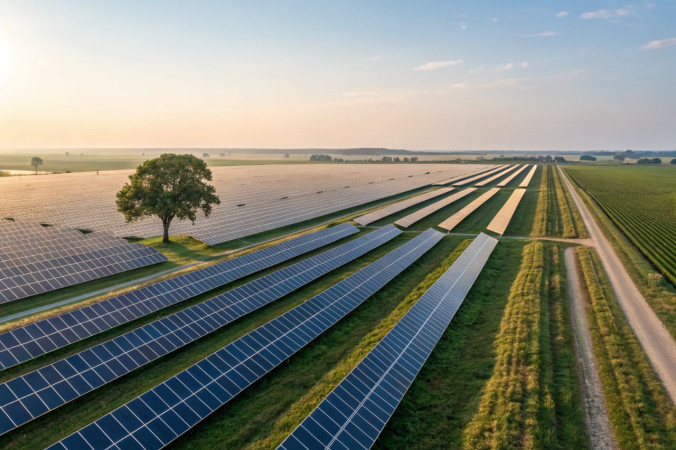
Follow India Renewable Energy News on WhatsApp for exclusive updates on clean energy news and insights
U.S. Solar Market Adds 10.8 GW in Q1 2025 Amid Tariff Pressures and Installation Slowdown
Jun 10, 2025
The U.S. solar industry installed 10.8 GW of new capacity in Q1 2025, marking a 43% drop from Q4 2024 and a 7?cline year-on-year, according to SEIA and Wood Mackenzie. Despite the fall, it was the fourth-highest quarter on record, with solar accounting for 69% of all new power additions. Utility-scale projects contributed 9 GW, with states like Texas and Florida leading installations and major offtakers including Meta and Amazon securing over half of new contracts.
Solar system prices rose due to supply chain challenges, tariffs, and domestic content rules. Utility-scale fixed-tilt and tracking systems now cost $1.08/W and $1.23/W, respectively. Module prices rose to $0.32/W, impacted by anti-dumping duties on Southeast Asian imports. Nonetheless, TOPCon modules offered efficiency gains, mitigating some cost pressures.
Residential solar installations fell 13% YoY to 1.1 GW, with storage gaining traction—now included in 38% of home systems. Commercial solar grew 4% YoY to 486 MW, buoyed by delayed NEM 2.0 projects in California, while community solar fell 22% YoY to 244 MW, with major declines in Maine and Massachusetts.
Manufacturing expanded with 8.6 GW of new module capacity added, bringing total U.S. capacity to 51 GW, though domestic polysilicon and wafer supply chains remain underdeveloped. Cell production rose to 2 GW, with major growth expected by year-end.
Looking ahead, the market faces risks from policy uncertainty, tariffs, interconnection delays, and labor shortages. Between 2025 and 2030, the U.S. is projected to add 250 GW of solar, averaging 43 GW annually, but with a potential short-term contraction through 2027 before rebounding due to increased electricity demand and domestic manufacturing incentives.